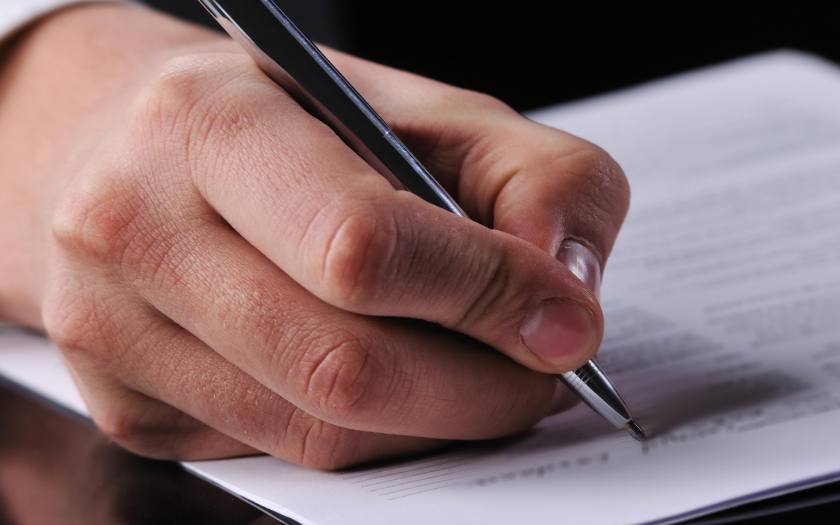How to Speed up Your Paper Application

You only get one chance to convince the visa officer with ease - after that, it’s a fight.
Based on experience, I will show you how to avoid common pitfalls and red flags when aiming for a fast desk decision. Fact: You only get one chance to convince the Visa Officer with ease - after that it’s a fight.
A typical paper application consists of the following five (5) stages:
1. Assessment
Most importantly, plan ahead to take advantage of your best options. If you need help with the assessment of your case, then obtain sound immigration or citizenship advice from one of the authorized representatives at myconsultant.ca. Only with a proper case strategy can you reach the ultimate goal of Canadian permanent residence or Canadian citizenship.
2. Verification
Next, collect your documents according to the checklist(s) before completing any forms, otherwise you will end up re-filling the forms more often than is necessary since they change quite often. Consequently, you must check the validity of the forms on the bottom of the page; e.g. the Generic Application Form for Canada was updated again in early June 2018 - the footer of the form reads “IMM 0008 (06-2018) E.”
3. Preparation
When putting your forms and documents in order, keep in mind the motto “less is more.” Visa officers are very busy and prefer to receive solid applications. Simply run your story like a golden thread through your cover letter and proof it with the bare minimum. Avoid any inaccuracies by asking yourself: “Does this make sense to the visa officer?”
Organize your application well by sorting the forms and documents in accordance with the checklist(s). Create a table of contents, number the pages (except originals, of course), and insert tabs accordingly. Tip: Print the permanent residence photo specifications and attach your photos in a small pouch or envelope with paperclips to it so that the Intake Department of Immigration, Refugees and Citizenship Canada (IRCC) will not miss your photos. Many applications have been returned in recent years due to “missing” evidence, even though it was part of the submitted application.
4. Application
Review your application the day before sending it to the corresponding government agency. Ensure that you enclosed the correct government fees, photos, certified copies, original civil status documents, translations, police certificates, language tests, Educational Credential Assessments, and all signed and dated forms. Above all, make a copy of your entire application and double-check it. This task is much easier to accomplish when your pages are numbered.
Finally, send your paper application to IRCC either via Xpresspost or courier so you can track your package. When things go wrong, you will need at least a tracking number and a date to follow up with your service provider.
If you are able to link your paper application to your online account, I strongly recommend you do so. Even though the linking process can be cumbersome and time-consuming, the benefit lies in having online access to your file. Accordingly, all updates and messages will reach you quicker. Nonetheless, you still have the option to check the status of your file (e.g. citizenship application) via the eClient Application Status (eCAS) online services to stay in the loop.
5. Finalization
During the processing of your application, IRCC will request your medical exams and police certificates. You should comply within the time limits whenever possible, otherwise you should promptly request a time extension.
A few days after completing your eMedicals you can check whether you have passed the medical exams in your online account or in eCAS.
To ensure smooth sailing, keep your contact information up-to-date, your passport valid, and your correspondence with the government agency to a minimum, but feel free to ask for small favours to accommodate your travelling plans. For example, IRCC requires some countries (e.g. Mexico) to obtain an official letter from the visa office to request a police certificate from the local police agency (e.g. Attorney General of the Republic - Procurador General de la República). Instead of waiting for the instructions letter from IRCC, you can request the official letter directly from the visa office by eMail. This approach will save quite a bit of time.
News Release from IRCC
On August 9, 2018, IRCC announced “a new way forward for some immigration application processing times” in a news release:
On July 31, 2018, IRCC began using an improved method to estimate processing times for some new permanent residence applications. The processing times are projected, and tell applicants how long we expect most applications to take under normal circumstances if submitted today.
In a nutshell, now you have access to more accurate processing times online directly from IRCC.
Processing Trend
The current trend of processing spousal sponsorships worldwide within 6 months started in December 2016. For instance, the visa office in Vienna, Austria, processes straightforward spousal sponsorship cases within 4 to 6 months. One of my recent spousal sponsorship cases was processed within 8 months, instead of 12, by the visa office in Mexico City, Mexico.
Nowadays the processing of Canadian citizenship grant applications for adults (18 years and older) takes about 10 months instead of 12 months.
Opinion
Thus, recent trends and improvements lay the foundation for speedier processing times. Follow the simple tips outlined above and, if your intent is genuine, you will likely receive a positive decision before the standard processing time is up.
Disclaimer
Information provided in this article does not constitute immigration or citizenship advice. Authorized representatives are the only individuals allowed to assist applicants with immigration and citizenship services for a fee. In addition, immigration laws, regulations, and policies are changing constantly. You are well-advised to consult with a competent consultant to enjoy peace of mind, convenience, transparency, and reduction of risk potential.
Resources

![Katharina Kontaxis [CICC ID: R512662]](https://capicstorage.blob.core.windows.net/shared/myconsultant/1530-ProfilePhoto.jpg)